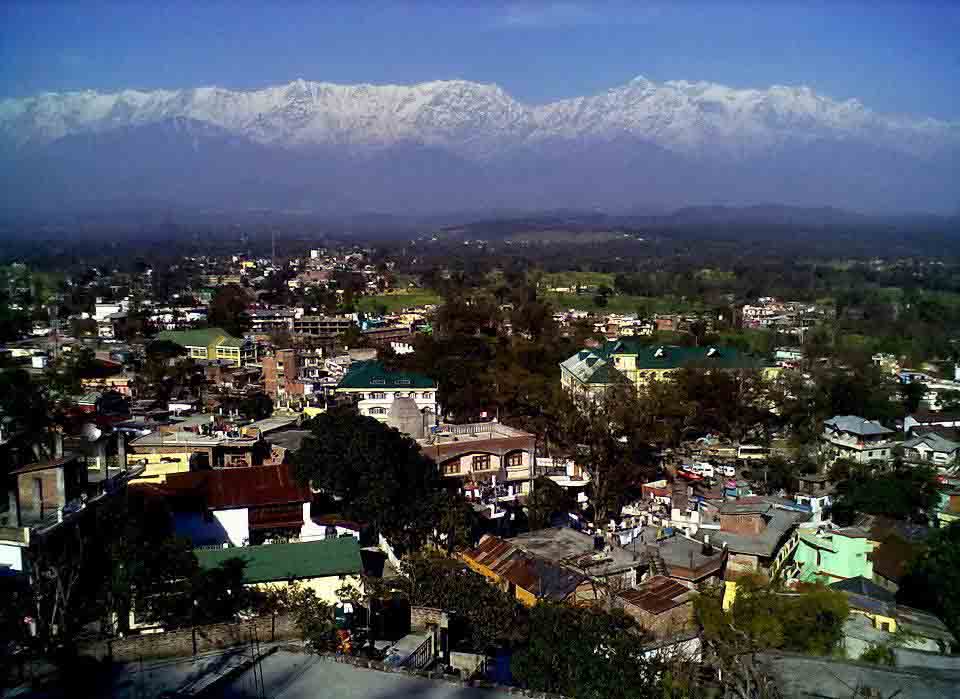Best of Himachal
Tour Itinerary
Day 01: Delhi - Manali (Overnight Car/Volvo Bus)
Manali is placed at the northern end of Kullu Valley. It is located at an altitude of 1829 meters above the sea level. This is one of the most popular hill stations of Himachal Pradesh. Its breath taking landscapes, lush green valleys, fruit orchards, meadows of wild flowers species and the cool climate makes this, favourite memorable honeymoon destination in India.
Day 02: Arrive Manali
In the morning arrive Manali from Delhi and check in at hotel. Take rest for few hours ,there after half day city tour visiting Hadimba Devi Temple, Club House, Syali Mahadev Temple, Vashisht hot water sulphur springs & Village . Blessed with some of the most spectacular and beautiful landscapes anywhere, Manali is a travellers paradise -lofty snow peaks, deep gorges, lush green valleys, fast flowing rivers, enchanting mountain lakes, flower bedecked meadows, beautiful temples and monasteries steeped. In the evening return back to hotel . Overnight at hotel.
Day 03: In Manali - Solang Valley - Rohtang - Manali
Full day excursion visiting Solang Valley ,Kothi Gorge, Gulaba, Marhi, Rohtang Pass (Upto Snow Line in case Rohtang is closed due to snow fall) and Sollang Valley. You can enjoy various adventure sports like Para gliding , Snow scooters, Ski at Solang Valley. In the evening return back to Manali. Overnight at hotel.
Day 04: Manali - Dharamshala
After breakfast move from Manali to Dharamshala. At distance of 260 kilometer on the way stopping at Baijnath known for its Shiva Temple and further at Palampur famous For Tea Garden. Dharamhsala is a hill-station lying on the spur of the Dhauladhar Mountains about 18 kms north-east of Kangra, It is known for its scenic beauty set amidst high pine and oak trees. Since 1960, when it became the temporary headquarters of His Holiness The Dalai Lama, Dharamshala has risen to international repute as "The Little Lhasa in India"
Day 05: Dharamshala local sightseeing
Dharamshala is a city in the upper reaches of the Kangra Valley and is surrounded by dense coniferous forest consisting mainly of stately Deodar cedar trees. The suburbs include McLeodGanj, Bhagsunath, Dharamkot, Naddi, ForsythGanj, Kotwali Bazaar (the main market), Kaccheri Adda (government offices such as the court, police, post, etc.), Dari, Ramnagar, Sidhpur, and Sidhbari (where the Karmapa is based).The village of McLeodGanj, lying in the upper reaches, is known worldwide for the presence of the Dalai Lama. On 29 April 1959, the 14th Dalai Lama (Tenzin Gyatso) established the Tibetan exile administration in the north Indian hill station of Mussoorie. In May 1960, the Central Tibetan Administration (CTA) was moved to Dharamshala.Dharamshala is the centre of the Tibetan exile world in India. Following the 1959 Tibetan uprising there was an influx of Tibetan refugees who followed the 14th Dalai Lama. His presence and the Tibetan population have made Dharamshala a popular destination for Indian and foreign tourists, including students studying Tibet.One of the main attractions of Dharamshala is Triund hill. Jewel of Dharamshala, Triund is one day trek at the upper reaches of McLeodGanj, about 9 km from McLeodGanj.
Day 06: Dharamshala - Dalhousie .
After Breakfast drive from Dharamshala towards Dalhousie after doing the local sightseeing of Places which includes, His holiness Dalai lama residence at Mc Leodgunj, War memorial, Bhagsunath temple and Dal Lake. Reach Dalhousie in the evening
Day 07: Dalhousie - Khajjiar - Dalhousie
Dalhousie has been named after the British Governor - General of the l9th century, Lord Dalhousie. Surrounded by varied vegetation - pines, deodars, oaks and flowering rhododendron. Local sightseeing of Dalhousie includes visit to Panjipula, Subhash Baoli and excursion to Khajjiar 24 km fro Dalhousie surrounded by thick Deodar forest. Drive from Dalhousie to Khajjiar is awesome.
Day 08: Dalhousie - Amritsar
Early morning drive from Dalhousie to Amritsar. Upon arrival check-in at hotel .Later proceed for local sightseeing tour of Amritsar covering Golden Temple-the holy scripture is brought in a vivid procession from the Akal Takhat (the highest temporal seat of the Sikhs) in the morning to the temple to be returned at night. Singing is central to Sikh worship & is a feast to the souls when hymns from the holy scripture are recited Kirtan and the waves of the classical ragas, a sublim blend of voice & music and Jallianwala Bagh-the historic site where hundreds of innocent Indian men, women an children were massacred by British General Michael Dyer on April 13, 1919. A memorial and Garden have been created here as a national monument.
.
Day 09:Amritsar - Local sight seeing.
This day will be free for some shopping and to explore local places at Amritsar .In the evening Evening visit India Pakistan Border to watch retreat ceremony-30 KM on the road to Lahore is India-Pakistan Border. A visit to the border is an interesting experience especially at Sunset, when the retreat ceremony takes place with the Border Security Force on the Indian Side and the Sutlej Rangers on the Pakistan side putting up a well coordinated and spectacular display. The sound from the Bugles blown together from both sides paints past on the canvas when India and Pakistan were one, simultaneously Flags of the two nations are ceremoniously retrieved and lights are switched on marking the end of the day. Amidst thunderous applause today this point is the only land route open to approach Pakistan and central Asia. Return to hotel.
Day 10: Depart Amritsar
End of tour and our services with never ending memories












